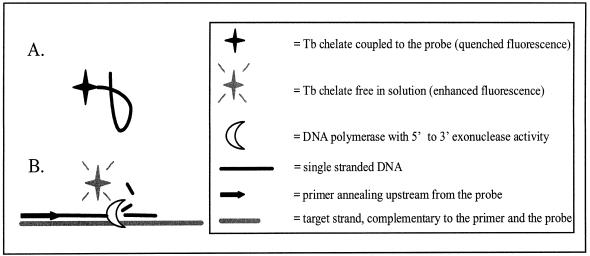Figure 1.
Assay principle. (A) When the stable, fluorescent terbium chelate used as label is coupled to a single-stranded stretch of DNA, the fluorescence intensity of the chelate is significantly lower than when the chelate is free in solution. (B) Hybridization of a probe labeled at its 5′-end with the chelate to a complementary target amplicon during the annealing/extension step of PCR results in detachment of the label from the probe and a subsequent signal increase. This detachment is catalyzed by the 5′→3′ exonuclease activity of the DNA polymerase used to amplify the target sequence.

